Ammania gracilis
Scientific name: Ammania gracilis
Family: Lythraceae
Usual maximum size in aquariums: 20 - 50 cm (7.87 - 19.69 inch)
014
Recommended pH range for the species: 6 - 8
Recommended water hardness (dGH): 4 - 12°N (71.43 - 214.29ppm)
0°C 32°F30°C 86°F
Recommended temperature: 20 - 28 °C (68 - 82.4°F)
Reproduction of the plant: Cuttings
Origin (in the wild): Africa
How fast these plants grow: Fast
Recommended substrate: Gravel
Demands on lighting: Bright
Ideal placement in a fish tank: Background
Common Names
Copper Red Ammania
Origin
Ammania gracilis originates from West Africa, where it is commonly found in tropical wetlands, marshes, and along riverbanks. It thrives in warm, humid environments, adapting to both submerged and emerged conditions. This plant is naturally found in regions such as Senegal and nearby areas.
Quick Overview
- Ideal For: Aquariums, paludariums
- Difficulty Level: Medium to Difficult
- CO2 Requirements: Beneficial for growth
Growing Conditions
Ammania gracilis grows best when given bright lighting and nutrient-rich conditions. It can be grown both submerged in aquariums and emerged in paludariums or humid environments. However, it tends to develop more vibrant red hues and grows more robustly when grown emerged. If grown submerged, especially in aquariums, it requires strong lighting and regular fertilization to maintain its vivid coloration. Without these conditions, its leaves may lose their red color and growth may slow down.
This fast-growing plant thrives in slightly acidic to neutral pH levels (6 to 8) and moderate water hardness (4 to 12 dGH). For the best results, plant it in gravel substrate that provides good root support. Adding CO2 supplementation will enhance growth and help the plant maintain its red coloration in submerged conditions.
Planting Area
Due to its height, which can reach up to 50 cm (19.69 inches), Ammania gracilis is ideal for the background of aquariums. In larger tanks, it creates a striking contrast with green plants when planted in groups. Its vibrant red leaves make it an eye-catching plant, providing depth and color to any aquascape. Be sure to space the plants appropriately to prevent overcrowding, ensuring that each receives enough light.
Propagation
Ammania gracilis reproduces through stem cuttings in aquariums. To propagate, take cuttings that are at least 10 cm (4 inches) long from the top or side shoots of the plant. Remove the lower leaves and insert the bare stem into the substrate. With proper lighting and nutrient supplementation, the cuttings will develop roots and grow into new plants. Regular trimming and propagation help keep the plant healthy and encourage bushier growth.
Difficulty
Ammania gracilis is considered medium to difficult to grow, especially in submerged conditions. It requires bright lighting, regular fertilization, and clean water to thrive. Without sufficient lighting and nutrients, the plant may lose its vibrant coloration and struggle to grow. However, when provided with the right conditions, it grows quickly and adds a stunning visual element to any aquarium.
Short Description
Ammania gracilis is a fast-growing aquatic plant known for its striking red leaves, which add color and depth to aquascapes. While it can be grown submerged, it performs best when grown emerged, where it develops more vibrant coloration. To keep this plant in top condition, it requires bright lighting, regular fertilization with nutrients such as iron and potassium, and CO2 supplementation in high-light setups.
In aquascaping, it works well as a background plant and is often used in Dutch-style setups. Its fast growth rate makes it an excellent choice for creating a lush, dynamic tank environment.
Lighting Requirements
Ammania gracilis requires bright lighting to thrive, especially in submerged conditions. In traditional fluorescent setups, bright light is considered around 0.5 to 1 watt per liter (2 to 4 watts per gallon). For LED lighting, this translates to 30 to 40 lumens per liter (120 to 160 lumens per gallon). Without sufficient light, the plant's red leaves will fade, and its growth will slow down. Provide intense lighting for at least 8 to 10 hours a day to keep the plant healthy and maintain its vibrant color.
Potential Issues
- Browning or Yellowing Leaves: Caused by insufficient lighting or nutrient deficiencies, particularly iron or potassium.
- Poor Growth: Low nutrients, lack of CO2, or insufficient light can slow down its growth.
- Leaf Decay: Common in low-light conditions. Increase light intensity and add nutrients to prevent leaf loss.
Overall Appeal
Ammania gracilis is a visually stunning plant that adds vibrant red hues and texture to aquariums and paludariums. While it requires specific care, including bright lighting and regular fertilization, the results are worth the effort. When provided with the proper conditions, it grows quickly and becomes a striking focal point in any aquascape.

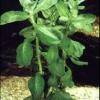 Ammania senegalensis
Ammania senegalensis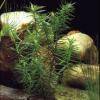 Didiplis diandra
Didiplis diandra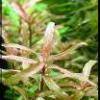 Nesaea crassicaulis
Nesaea crassicaulis Rotala indica
Rotala indica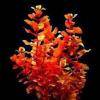 Rotala macrandra
Rotala macrandra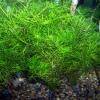 Rotala nanjenshan
Rotala nanjenshan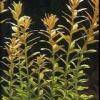 Rotala rotundifolia
Rotala rotundifolia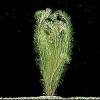 Rotala wallichii
Rotala wallichii